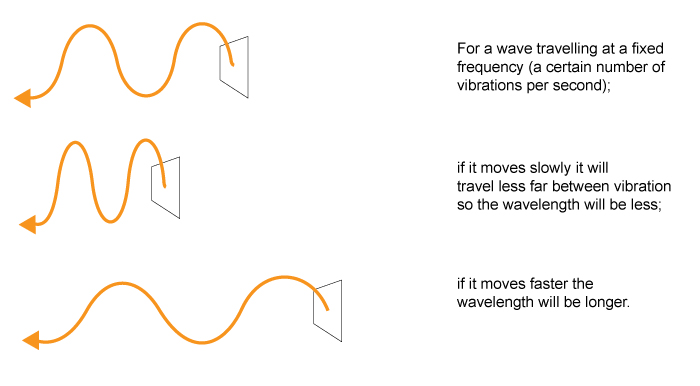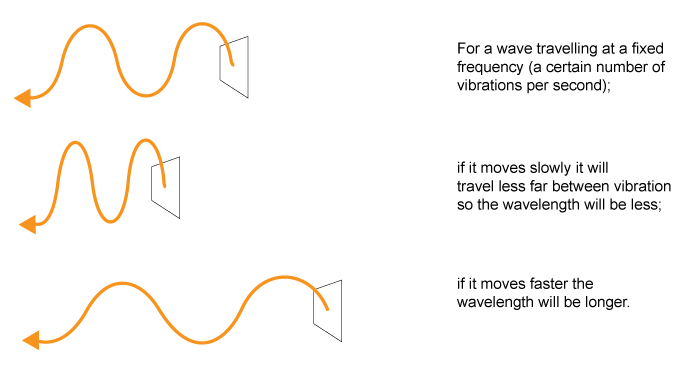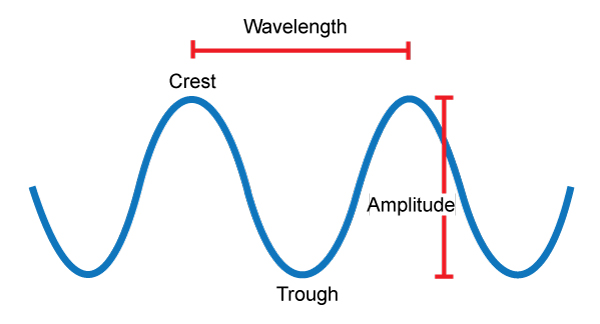In this experiment, students report their findings when bread, covered in butter, is placed in a microwave without the turning plate. They also use their data to calculate the speed of light.
Student Sheet
In this practical I will be:
- Carefully measuring and recording the findings of the experiment.
- Calculating the speed of light using recordings from my experiment.
- Analysing the method for the experiment in order to improve the accuracy of my calculated value.
Introduction:
The Egyptian pharaoh Akhenaten has declared there is only one god and that is Aten the sun-disk. The Sun is the source of our light and is important for our lives in Egypt. The ancient Egyptians had strange stories to explain the light and dark of day.
The Sun in the sky seems to be a long way away. If it was not we would be burnt by the heat of the Sun so light must travel from the Sun to Earth. You can find out how fast light travels using the following method.
Equipment:
- Access to a microwave oven
- 1 large plate or shallow bowl
- 1 flat, non-metal plate or board
- 4 approximately equally thick slices of bread from a rectangular loaf
- A knob of butter or margarine
- 1 dinner knife
- 1 ruler (30 cm long)
- Calculator
- Paper towelling
Hazard warnings:
Make sure there is no metal on the bread when put into the microwave oven and be careful of the butter or margarine since it can be very hot when it comes out of the microwave oven.
Method:
- Remove the turntable from the microwave oven. Or you may be able to use the turntable by placing it upside down over the rotating parts. Ensure that it does not turn before using it.
- Check the back or door lip of the microwave oven for the frequency of the wave. It will be in megahertz (MHz) or gigahertz (GHz). It should be about 2,450 MHz or 2.45 GHz.
- Put the large plate or bowl over the rotating parts so the plate or bowl cannot turn when the microwave oven is turned on. Or use the turntable upside down as mentioned in point 1.
- Take the four slices of bread. Using the dinner knife spread the butter or margarine evenly but thickly on one side and right up to the crust edge.
- Lay the bread slices on the flat plate or board in a 2 x 2 slices square edge to edge, so it forms a bread sheet.
- Add some butter to the edges to create a continuous butter surface.
- Carefully put the flat plate with the bread on into the centre of the microwave oven. Turn on and heat the bread until the butter starts to melt. This should take about 10-15 s, but just in case check every 5 s.
- When you see the butter or margarine has melted in parallel strips separated by unmelted strips, stop the microwave oven.
- Use your ruler to measure the distance, in centimetres, between the melted strips.
- Multiply this figure by 2 to get the wavelength of the microwave oven. It is likely to be about 12 cm.
- The frequency of a wave is the number of waves produced per second Take the frequency figure for the microwave and multiply it by the wavelength. If the frequency is in megahertz you will then need to multiply by 1 million (1,000,000) and if using gigahertz multiply by 1 billion (1,000,000,000).
- This will give you the approximate speed of light in centimetres per second. To convert it to metres per second, divide by 100. Find the actual speed of light, compare your answer, and try to work out how accurate your method was.
- How could you make it more accurate?
Theory:
The microwave oven works by producing microwaves, a type of electromagnetic wave, from a device called a magnetron.
The magnetron is typically on the right hand side of the inside of the microwave oven, covered by a grill. The microwaves enter the cabinet of the microwave oven through this grill. The waves are large and travel across the cabinet, reflecting off of the opposite wall. This creates a standing wave where two waves going in opposite directions as shown in the diagram 1 below:

These two waves interact to make huge vibrations at some points and in other places there is no vibration.
This means molecules will be vibrated very powerfully where there is a large vibration, and because the kinetic energy of the molecule is high the temperature increases. In the areas where the vibration is very low the kinetic energy of the molecules will be low so the temperature is lower. These two different areas are separated by half a wavelength.
The turntable in a microwave oven is there to turn the food round so the food cooks evenly.
If you put the buttered bread in the microwave the butter will first melt where the microwaves are the most intense, so the distance between these will be half a wavelength.
So what has the wavelength got to do with the speed of light?
Your microwave oven is producing microwaves vibrating at a certain frequency. This frequency can be found written on the back of your microwave oven.
The wavelength depends on how rapidly the wave is vibrating (the frequency) and how fast it is moving. As it is a type of light it moves at the speed of light.
Speed, wavelength and frequency are closely related, as described in diagram 2:

So this means that if the wave has a frequency of 100 Hz it will travel its wavelength 100 times in a second. So the speed of a wave is its frequency multiplied by its wavelength.
Because microwaves are a type of light you have just measured the approximate speed of light.
Teacher and Technician Sheet
In this practical students will:
- Carefully measure and record the findings of the experiment.
- Calculate the speed of light using recordings of their experiment.
- Analyse the method for the experiment in order to improve the accuracy of calculated value.
Introduction:
Most homes have a microwave oven. Students will be very aware of them for cooking. However, they can also be used as a science instrument to gain some measure of the speed of light.
A microwave oven works by producing microwaves, which are a type of electromagnetic wave just like radio waves, infrared or visible light. A wave has a peak and a trough.

What this means in terms of energy can be discussed with the help of a diagram, similar to the one below. At the same time you can introduce the students to the terms amplitude, wavelength, and frequency.
Amplitude is the maximum distance the material through which a wave travels moves away from its rest position. The higher the wave moves up-and-down as it vibrates, the larger the amplitude of the resulting waves.
The distance between two consecutive (one after another) crests or troughs of a wave is called the wavelength (λ). The wavelength can be measured from any point on a wave as long as it is measured to the same point on the next wave.
The number of complete waves, or complete cycles, per unit of time is called the frequency. Because every complete wave has one crest and one trough, you can think of the frequency as the number of crests or troughs produced per unit time. The unit used to measure wave frequency is called the hertz (Hz). The frequency of a wave depends on the frequency at which its source is vibrating.

Curriculum range:
This activity is designed for secondary age students investigating light and waves. It links with:
- reporting on findings from enquiries, including oral and written explanations, displays or presentations of results and conclusions;
- using simple mathematics to calculate a physical quantity;
- using straightforward scientific evidence to answer questions or to support their findings; and
- building a more systematic understanding of materials by exploring and comparing the properties of a broad range of materials;
Going further:
Discuss why the microwave oven needs to have a rotating base. Discuss if one result is enough and how could you improve the accuracy of your result.
Hazard warnings
Make sure there is no metal on the bread when put into the microwave oven and be careful of the butter or margarine since it can get very hot.
An alternative to bread and butter is to use a large flat square of chocolate. Again there is a lot of heat and the molten chocolate can be difficult to remove from the microwave.
Take care when moving the microwave oven around.
Equipment:
- Access to a microwave oven
- 1 large plate or shallow bowl
- 1 flat, non-metal plate or board
- 4 approximately equally thick slices of bread from a rectangular loaf
- A knob of butter or margarine
- 1 dinner knife
- 1 ruler (30 cm long)
- Calculator
- Paper towelling
Technical notes:
This is works well as a home experiment, but as a school experiment it’s restricted by access to an available microwave oven. It is therefore reasonable to suppose that it would be carried out only as a demonstration in a school lab.
This experiment is easy to set up and carry out, even if it can get a little messy.
It may take a few attempts to get the timing right. I obtained another result from the same bread by buttering the other side (once it was room temperature) and using it again. The results were the same.
It’s clear to see melted and non-melted parts on the bread although it isn’t too clear where to measure, with different possible parts measuring a different amount.
It is difficult to get the results accurately to the actual speed of light so this would probably have to be discussed with the students’. The discussion would be about where we could measure from and too, how many samples we would need to carry out to get a set of results and how we could get an average result from the samples.
The results allow a good visual representation to consolidate the notes on how a microwave oven works.
Downloads
Measure the speed of light: student sheet
Experiment | PDF, Size 58.88 kbMeasure the speed of light: teacher sheet
Experiment | PDF, Size 0.17 mb

















